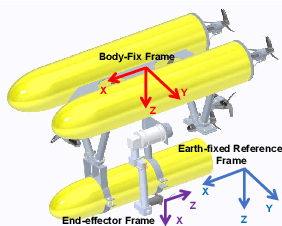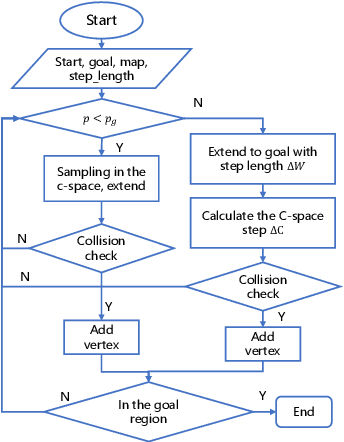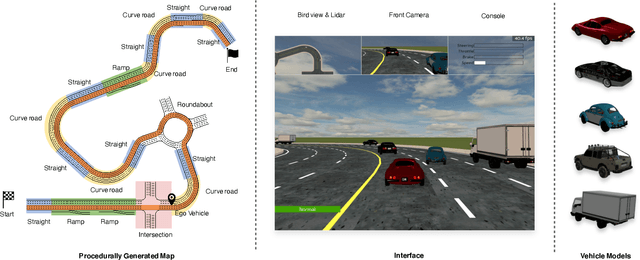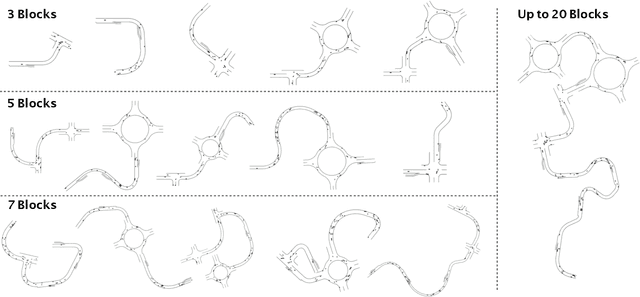Cong Qiu
Realistic Safety-critical Scenarios Search for Autonomous Driving System via Behavior Tree
May 11, 2023Abstract:The simulation-based testing of Autonomous Driving Systems (ADSs) has gained significant attention. However, current approaches often fall short of accurately assessing ADSs for two reasons: over-reliance on expert knowledge and the utilization of simplistic evaluation metrics. That leads to discrepancies between simulated scenarios and naturalistic driving environments. To address this, we propose the Matrix-Fuzzer, a behavior tree-based testing framework, to automatically generate realistic safety-critical test scenarios. Our approach involves the $log2BT$ method, which abstracts logged road-users' trajectories to behavior sequences. Furthermore, we vary the properties of behaviors from real-world driving distributions and then use an adaptive algorithm to explore the input space. Meanwhile, we design a general evaluation engine that guides the algorithm toward critical areas, thus reducing the generation of invalid scenarios. Our approach is demonstrated in our Matrix Simulator. The experimental results show that: (1) Our $log2BT$ achieves satisfactory trajectory reconstructions. (2) Our approach is able to find the most types of safety-critical scenarios, but only generating around 30% of the total scenarios compared with the baseline algorithm. Specifically, it improves the ratio of the critical violations to total scenarios and the ratio of the types to total scenarios by at least 10x and 5x, respectively, while reducing the ratio of the invalid scenarios to total scenarios by at least 58% in two case studies.
Autonomous Underwater Vehicle-Manipulator Systems Path Planning with RRTAUVMS Algorithm
Sep 11, 2021



Abstract:Autonomous Underwater Vehicle-Manipulator systems (AUVMS) is a new tool for ocean exploration, the AUVMS path planning problem is addressed in this paper. AUVMS is a high dimension system with a large difference in inertia distribution, also it works in a complex environment with obstacles. By integrating the rapidly-exploring random tree(RRT) algorithm with the AUVMS kinematics model, the proposed RRTAUVMS algorithm could randomly sample in the configuration space(C-Space), and also grow the tree directly towards the workspace goal in the task space. The RRTAUVMS can also deal with the redundant mapping of workspace planning goal and configuration space goal. Compared with the traditional RRT algorithm, the efficiency of the AUVMS path planning can be significantly improved.
Improving the Generalization of End-to-End Driving through Procedural Generation
Dec 26, 2020



Abstract:Recently there is a growing interest in the end-to-end training of autonomous driving where the entire driving pipeline from perception to control is modeled as a neural network and jointly optimized. The end-to-end driving is usually first developed and validated in simulators. However, most of the existing driving simulators only contain a fixed set of maps and a limited number of configurations. As a result the deep models are prone to overfitting training scenarios. Furthermore it is difficult to assess how well the trained models generalize to unseen scenarios. To better evaluate and improve the generalization of end-to-end driving, we introduce an open-ended and highly configurable driving simulator called PGDrive. PGDrive first defines multiple basic road blocks such as ramp, fork, and roundabout with configurable settings. Then a range of diverse maps can be assembled from those blocks with procedural generation, which are further turned into interactive environments. The experiments show that the driving agent trained by reinforcement learning on a small fixed set of maps generalizes poorly to unseen maps. We further validate that training with the increasing number of procedurally generated maps significantly improves the generalization of the agent across scenarios of different traffic densities and map structures. Code is available at: https://decisionforce.github.io/pgdrive
 Add to Chrome
Add to Chrome Add to Firefox
Add to Firefox Add to Edge
Add to Edge